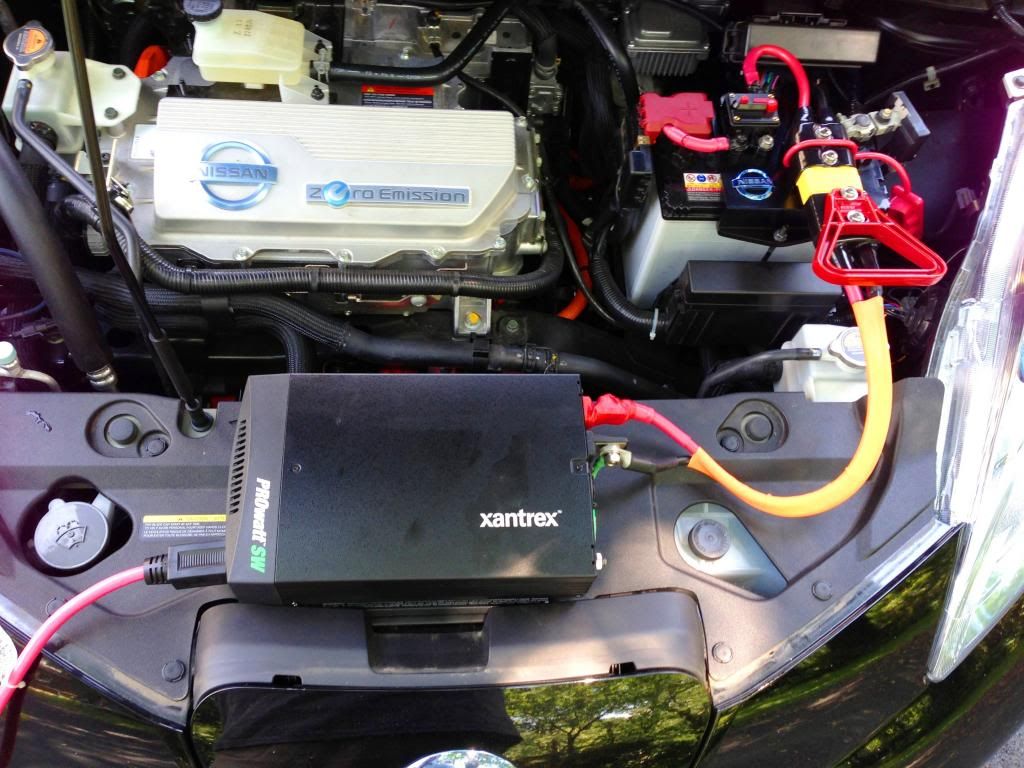Here's the procedure: (LEAF is in Ready mode)
Disclaimer: There's always a possibility something could go badly wrong. Wear protection for eyes and skin. You could die, you could destroy one or all nearby vehicles! You have been warned!
1. Be sure all unattached jumper cable clamps are not touching each other or anything else conductive.
2. Connect the positive (red) jumper cable clamp to the positive terminal of the dead car's battery.
3. Connect the other positive jumper cable clamp to the LEAF's 12v battery positive terminal.
4. Connect the negative jumper cable clamp to the dead car's negative battery terminal.
5. This is the final connection, connect the negative jumper cable clamp to the LEAF's DC-DC converter negative terminal. You can locate this by following the heavy wire from the negative battery terminal.
It is not necessary to connect the negative clamp on the dead car to it's engine block. The reason for doing this is to keep sparks well away from the battery. You always make the final connection to negative and always away from the battery, and always on the "good" car, as it's battery is already charged and in little danger of exploding should something go wrong.
Allow at a minimum of 2 full minutes before attempting to start the dead car. If it doesn't crank fast, immediately stop and wait some more. If after 10 minutes it won't crank, you should throw in the towel; Something is wrong.
Always disconnect in reverse order, so once the dead car is running, disconnect the negative clamp from the LEAF's DC-DC.
-Phil






